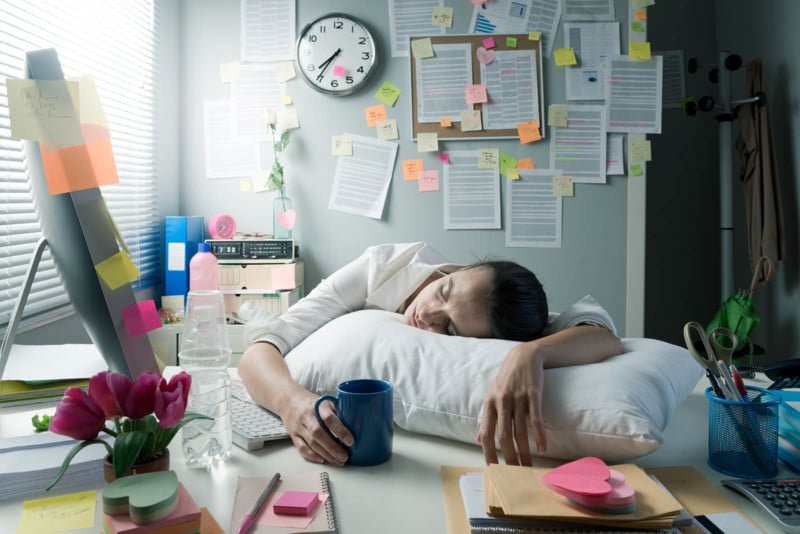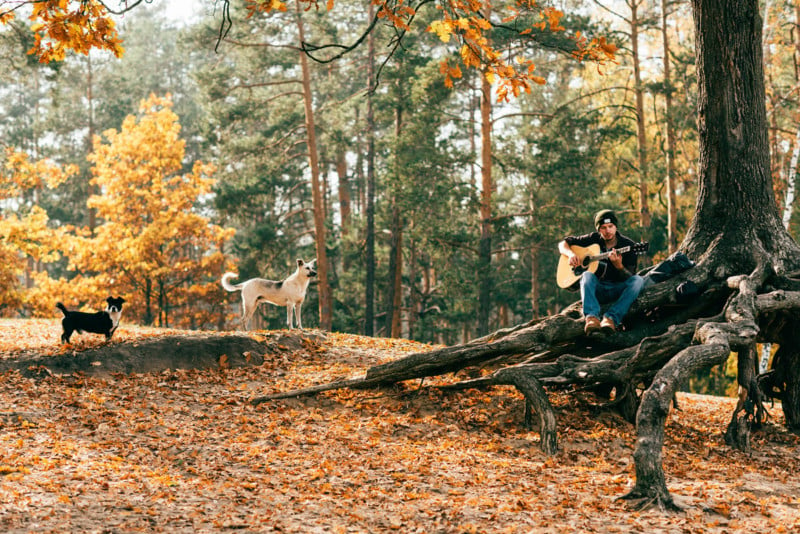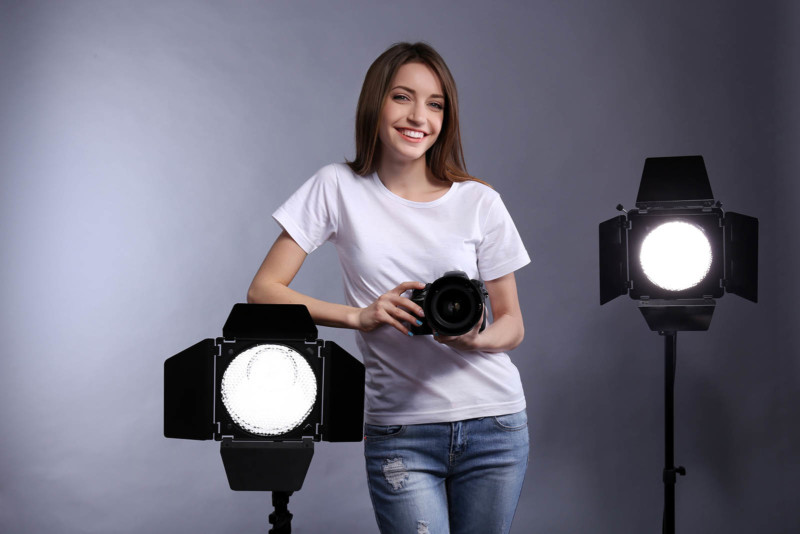Yes, Your Funk is Normal. No, It Won’t Last Forever.
![]()
The funk sucks. No matter who you are and no matter how long you’ve been at your art, everybody experiences the funk. Maybe you’ve even named your funk, mine is named Jeff. No real reason. Just feels a little bit more manageable whenever I’ve applied a name to it.
Sometimes the funk comes from parts that don’t have anything to do with your work. Maybe it’s a relationship that didn’t go so well, or maybe the stress of trying to get everything done in your daily life is getting to you. No matter where it comes from, every creative is subject to the funk; and the funk sucks.
Truthfully, I wish this wasn’t the case. I wish that I have always been able to operate at the highest possible level with the greatest possible ideas and the least amount of difficulty possible. But the true question is not how you avoid the funk, but how you manage the funk until you can get out of it.
I think that every photographer, regardless of whether you do this as a full-time professional, side hustle, or a hobby, can benefit from a few simple tricks and exercises that I have found helpful in my own career. They aren’t magic, but they are straightforward.
Life Assessment
The first place that I would recommend starting is by looking at your life and assessing how much time are you spending on the things that you really love. Here in America in particular, we are horrible at priorities — we tend to prioritize our jobs and de-prioritize our families and our friends.
I love the analogy of a bucket with a hole at the bottom. If the bucket represents your total mental health, and the water in the bucket represents your efforts, our goal in life is to balance outgoing and incoming. A careful assessment of your life both outgoing and incoming can provide valuable insights into your current state.
Be specific: how many hours a week are you working, how many hours a week are you doing things around the house, how many hours a week are you spending time with family and friends, and most importantly, how many hours a week are you doing nothing other than what you love?

Now, it would be reasonable to say, “You don’t understand, I don’t have time for myself with everything going on in my life.” And truthfully, no one can know your individual circumstances. But, this is a lesson I learned the hard way and I don’t really expect that I was much different from many of you.
I have totally been guilty of spending way more time at work than was healthy. Honestly, I got really tied up in being successful. I was working so that I could afford a super nice house, a new vehicle, travel, and all the “good” things in life. The reality for me was that I was miserable 5 or 6 days a week, 50 weeks a year simply so I could have those things, they weren’t fulfilling.
So, I made a change. In my case, I started working less, a lot less. Initially, there were some financial repercussions, but as I spent more time where I wanted to be, I found that I was more productive and more creative in my work. I was doing better work, faster. For me, that was the most enlightening thing, when I started prioritizing filling my bucket, I had something to give.
Feed Creativity
Okay, now that the self-help portion is out of the way, let’s talk about practices that feed the creativity monster. Martine Franck offered this advice to young photographers, but it resonated with me long after I was young. She says:
My advice to photographers is to get out there in the field and take photographs but also if they are students to finish their course, learn as many languages as possible, go to movies, read books visit museums, broaden your mind.
Art is ultimately about communicating ideas or emotions in a visual manner. Surround yourself with things that challenge you to confront ideas and emotions. If you believe one particular way, read the opposing viewpoint, spend time understanding the experiences of people different from yours, and devote time to studying other artists’ communique. New directions come from new experiences, if you aren’t spending time exploring, you will eventually run out of things to say.

I believe that this is often the funk that so many people speak of. They are out of new ideas to chase down and explore visually. So, here are some action items that you can do starting right now, no matter where you live.
1. Visit a gallery. Somewhere within a reasonable distance, someone is showing work. Set time aside to visit and soak in whatever they are doing.
2. Visit a gallery online. One of my favorite places to look is the New York Public Library’s digital collection. Additionally, check out Google’s Arts and Culture site for amazing collections.
3. Go to your public library. I like wandering the isles until something pops out at me, but if you are lost, ask the librarians for recommendations. They are a wonderfully under-utilized resource!
4. Visit a museum library. Many people are unaware that art museums often have libraries that are open to the public. The nearest art museum for me is Crystal Bridges in Bentonville Arkansas and they have an unparalleled selection of resources.
5. Find or start an artist group or guild. A quick search for “artist groups” will likely find a group of folks interested in art of all kinds. If you don’t find one, start one! Post it on Meetup and see what happens.
6. Listen to lectures online. The School of Visual Arts in New York’s i3 series is an incredible place to start.
7. Talk to your crazy uncle Eddie. This one feels a little out there but hang with me. Maybe it’s not your uncle, maybe their name isn’t Eddie, but we all have someone in our lives that is… unconventional. Whether it’s a crazy story that sparks an idea or a crazy story that gets you away from Netflix, spend time listening to the folks that are way out there. They see things differently and different is good.
Rebuild Your Confidence
I’m an educator. On the surface, that seems like a lot of grading, class preparation, and lectures. In reality, I am a professional funk wrangler. My students are not just pursuing how a camera works or what the inverse square law actually means, they are pursuing their own creative visions and expressions. There are a lot of growing pains with that pursuit and stalling out is very frequent.
When these things happen (and I do mean when) an important part of the return process involves re-convincing yourself that you have something valuable to say and show the world.

There is no right way to approach this because everyone is different, the source of your funk is different, and the solution is different. That said, here are a few things that I commonly recommend and have helped me and my students.
1. Use a random object generator to pick a subject to photograph. Assign yourself a certain number of finished images utilizing only that object, start low and go from there. Experiment with backgrounds, lighting environments, perspectives, focal lengths – anything and everything you can think of. If you can take an interesting photograph of a rubber band, you’re off to a good start.
2. Find calls for entry. Sometimes it is nice to be recognized for your work. Being included in a gallery show or being selected in a competition can be a remarkable boost to your confidence.
3. Donate your time. Photographing cookies or tampons was one of the more soul-sucking experiences of my life. Find a cause you are passionate about and use your gifts to give back to others. This provides meaning to your work and helps out worthy causes. Non-profits or NGOs like adoption agencies or group homes and animal shelters are great places to start.
4. Do work only for yourself. Find a subject that you find interesting. Photograph it, self-critique it, try again, and most importantly, don’t show it to anyone. This is for your development, not for social media or high-fives. There is something very freeing about chasing down an idea just for yourself.
5. Find a mentor. Pull up google maps, look for local photographers, find someone whose work you admire, and ask them if they would be willing to give feedback on a few images of yours over coffee. A lot of folks are busy, so don’t despair if you don’t hear back on the first email, keep going. Most photographers I know understand the struggle of starting out and are happy to help.
6. Be a mentor. This may sound odd, but just like donating your time, giving back also provides meaning and inspiration. No matter where you are in your journey, someone will benefit from hearing about your experiences.
7. Photograph without a camera. Take a stroll in the woods or downtown without your camera and practice observing and seeing the world around you. Look for things that would make great photographs and allow your memory to be your camera.
8. Try something completely new. If your go-to is golden hour light in a field of wheat, grab a tripod and shoot in the middle of the night in the industrial park. Look at your last 6 month’s images and do the exact opposite.
9. Try a new medium. Always wanted to shoot film but just never got around to it? Spent hours watching Procreate tutorials on Instagram but can’t draw? Think the banjo is a pretty sweet instrument? In my experience, creative people are interested and capable of a lot more than we think. Find something that helps awaken that creative spark.
10. Give yourself a freaking break. The only thing worse than being in a funk is feeling bad about being in a funk. You are not alone; you are not broken. This is normal and if you are reading this right now when you aren’t in a funk, your time is coming. It’s ok to be in a funk, just do something about it.
Final Thoughts
I would like to conclude with a quote from Sylvia Plath: “The worst enemy to creativity is self-doubt.” Don’t be afraid to fail or create something that is not good enough. Pick something to start with and chase it hard. If you love it, let that be enough for now. Critique can come later, find the thing that gets you excited about shooting and go do it.
About the author: Kyle Agee is a photographer and instructor based in Northwest Arkansas. The opinions expressed in this article are solely those of the author. You can find Agee’s work on his website and Instagram.
Image credits: Photos from Depositphotos.